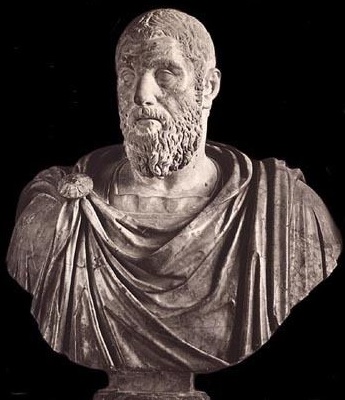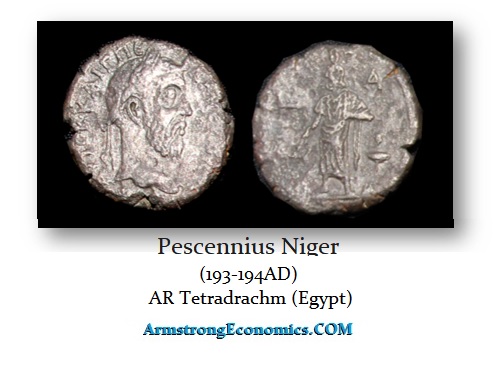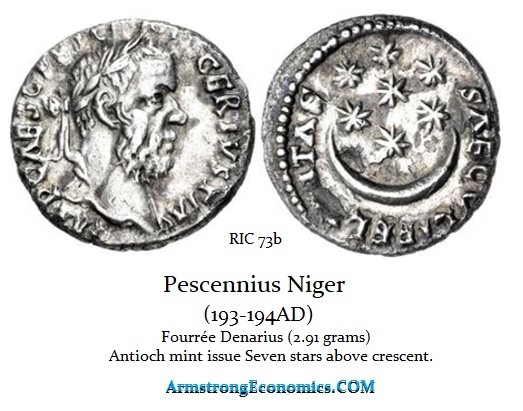Pescennius Niger
193-194 AD
C. Pescennius Niger was born sometime between 135 and 140 AD of humble origin. He had a long and honorable career in the army but did not display any exceptional victories. In 189 AD, he held the consulship and, in the following year, was appointed Governor of Syria by 191 AD. Following the murder of P. Helvius Pertinax, Pescennius Niger was proclaimed Emperor by his troops in April 193 AD while in Syria.
Pescennius Niger seems to have had a reputation for integrity, yet he was also a man of discipline. Niger was indeed perhaps a bit cautious after being declared Emperor by his troops. His forces were overwhelming at first, yet he delayed any attempt to march on Rome, seeking to perhaps further strengthen his troops. Had Niger begun to march upon Rome from the outset, other legions throughout the East would have most likely joined his cause against the disgraceful appointment of Didius Julianus in Rome. It was that hesitation on the part of Niger that provided the window of opportunity for Septimius Severus to begin his march toward Rome.
With Severus’ legions nearing Rome, the Senate declared Julianus a public enemy and ordered his execution to save Rome from the legions marching nearer by the day. For that reason, Severus had the upper hand over Niger when it came to the Senate. Severus, after having secured Rome, turned his attention to his rival in the East and thrice defeated the forces of Niger.
Pescennius Niger then concentrated the remnants of his army at Issus to make a last stand. Nonetheless, Niger was again defeated for the fourth time and fled towards the Euphrates in vain. He was eventually overtaken and executed by Severus.
Monetary System
Mint: Antioch.
Obverse Legend:
IMP CAES C PESC NIGERIVS IVS AVG
DENOMINATIONS
AU Aureus (6.80 grams)
AR Denarius (3.16 grams)
COLONIAL
AR Tetradrachm (Egypt)(quite rare)
Contemporary Counterfeit
Counterfeiting precious metal coins began when coins were virtually the first invented. A fourrée (meaning “stuffed”) is a coin that is typically counterfeit but sometimes officially produced either by the government or by people working in the mint. A fourrée is made from a base metal core plated with a precious metal to look like a solid metal coin. This was a clever ancient process by which a silver-plated coin was produced.
However, a fourrée appears to have the same artistic quality as a genuine coin. This raises the possibility that they were produced by nefarious mint employees who pocketed the silver or were part of the official monetary issue to cover expenses.
AR Denarius (2.91 grams)









